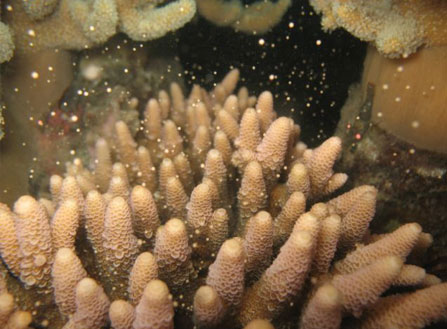Quicksilver Group News
October 27th, 2011Experience the annual Coral Spawning Phenomenon on the Great Barrier Reef
The ocean temperature is warm, it’s about 4 to 6 nights after the full moon in November, there is little tidal movement and the sun has set… Mother Nature’s conditions are just right for the annual phenomenon known as Coral Spawning on the Great Barrier Reef.
Coral spawning was unknown to science until 1982, when several marine biologists working on the Great Barrier Reef observed it in the wild for the first time.
Now certified divers can experience this unique natural phenomenon with Silverswift Coral Spawning Night Dives. Coral spawning is predicted to occur (but not guaranteed) between 16 – 18 November. Silverswift will depart Cairns nightly at 5.30pm to the Outer Reef and return at 11.15pm.
Michael Healy, Quicksilver Group Director Sales and Marketing said; “After the success of our coral spawning night tours last year we will again offer trips for this unique experience onboard our luxury dive and snorkel catamaran Silverswift to Great Adventures’ Norman Reef platform, where certified divers will be able to experience 2 fully guided night dives. We will also offer a guided snorkel tour for experienced snorkellers while non-swimmers also have the rare opportunity to join in the excitement as a “topside” observer. “
Quicksilver marine biologist, Russell Hore, explains that while corals have two reproductive methods, asexual where the individual polyps split and divide to increase overall size of the colony, to maintain a consistently robust gene pool corals need to have a sexual phase to exchange genes. This process is known as coral spawning.
“The majority of corals are hermaphrodites, which means they are both male and female at the same time. On the night of spawning, the polyps begin to expand out of their limestone cups and bundles of orange eggs can be observed. By synchronizing to reproduce at the same time, and putting most of their effort into a short period of the year, corals can maximize their reproductive effort. Everyone is aware of the day after coral spawning. There is usually an orange slick on the water that has a certain aroma, and all the plankton feeders have bulging stomachs from feasting on the leftover unfertilized eggs. “
Costs Certified Diver $200; Snorkeller/Observer $125
Bookings and enquiries for Coral Spawning Night Dives: 4044 9944
